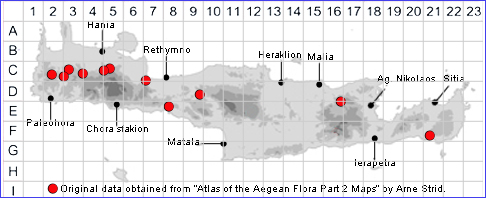SPECIES DESCRIPTION
HYPERICUM PERFORATUM subsp. VERONENSE
Family and Genus:- See- GUTTIFERAE/Sect. HYPERICUM
Common Names:- Perforate St. Johns wort.
Homotypic Synonyms:- Hypericum perforatum var. veronense, Hypericum
veronense.
Meaning:- Hypericum (Gr) Above-pictures. A name used by the Greek physician
and botanist Dioscorides for its use over shrines to repel evil spirits.
Perforatum (L) Pierced or apparently so with small round holes.
Veronense (L) Of or relating to Verona, Italy.
General description:- Very variable, short to tall, glabrous, perennial, spreading
and rooting at the base.
Stems:-
1) 10-100 cm, erect from a decumbent, rooting base, 2-lined.
Leaves:-
1) (5-)8-30(-35) mm, ovate to linear, sessile or subsessile, reticulate and with
numerous large translucent dots.
Flowers:-
1) 18-22 mm, in broad panicles. Yellow,
2) Sepals, lanceolate or oblong to linear, acuminate or aristate usually entire,
without or with a few superficial black dots.
3) Petals, with a few marginal black dots, sometimes also with superficial black
dots or streaks.
4) Styles, 3.
Fruit:-
1) Capsule, with dorsal vittae and lateral, oblique vittae or vesicles.
Key features:-
1) Sepals, not, or only slightly imbricate.
2) Stems, with 2 raised lines.
4) Branches of inflorescence ascending.
5) Flowerless axillary shoots present.
Habitat:- Rocky slopes with open dry shrubby vegetation and scrubland vegetation,
grassy meadows, open woodland. 0-1900 m. on various substrates.
Distribution:- Throughout Europe except the extreme north. Limited distribution on
Crete, mainly in the west.
Flowering time:- May to early Aug.
Photos by:- Fotis Samaritakis

